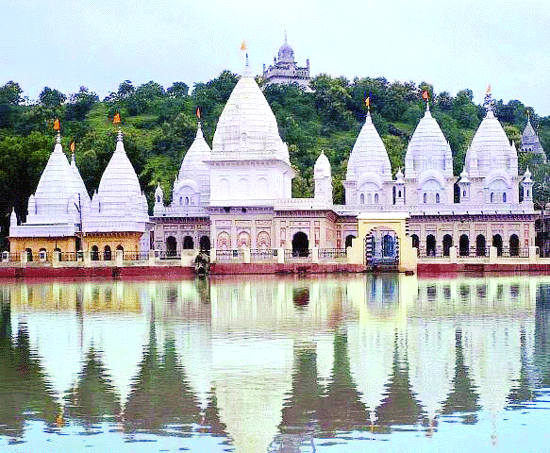The Archaeological Survey of India (ASI) has lost a long-drawn legal battle for ownership over a seventh century Jain temple situated at Kundalpur hills in Madhya Pradesh. The Supreme Court, deciding in favour of the Jain community, gave the Jain Temple Trust of Kundalpur the go-ahead to carry out necessary repairs and construction with approval of the State Government.
The cluster of 58 temples situated in and around the picturesque Kundalpur hills had become the subject matter of intense debate in the apex court as the ASI claimed that the old temple structure housing the idol of lord Adinath, popularly called the Bade Baba Temple, was a monument of “national importance”. It relied on a 1913 notification to stake ownership of the property.
The ASI even objected to the construction and restoration work carried out in and around the structure by Sri Digambar Jain Atishay Kshetra Kundalpur Public Trust, which managed the temple. The trust members were worried over the dilapidated structure housing lord Adinath getting worse with every passing day. Besides it, were the idols of deities Parswanaths, Pushpavrishtis, Chavardaris, Yaksha and Yakshinis.
The fear that the imposing structure could damage the idols forced them to chalk out plans to raise a new temple, just 100 metres away from the existing structure. in 2006 the deity was shifted out from the old temple complex. What came in favour of the trust was an order of April 5, 1999 of the MP Government which allowed the Jain Temple Trust to manage and operate the affairs of the temple.
But with ASI claiming 300 metre area around temple to be “prohibited” for any construction, the question was left to the determination of Supreme Court whether ASI had authority over the temple or whether it was a private temple.The battle was first fought in the MP High Court where ASI lost out to the temple trust. By an order passed on September 17, 2012, the HC held that for any monument to be declared a protected monument, the Centre has to issue notification under the Ancient and Historical Monuments and Archaeological Sites and Remains Act, 1958.
Agreeing with the HC’s reasoning, the bench ousted the jurisdiction of ASI over the temple. It further found out that a 1956 Register of ASI recorded the temple in question as “private temples “ and expressly held them to be governed by the state government. “The said Register is of the year 1956 and constitutes an admission that the said temples are not covered by the 1951 Act and were not intended to be taken over as monuments of national importance,” the bench of Justices SS Nijjar and AK Sikri said.
Consequently, the apex court upheld the HC order recognizing the state’s legal control over the temple under the Madhya Pradesh Ancient Monuments and Archaeological Sites and Remains Act 1964. The Court was assured that the deities would be put back in the same form and place once restoration work was over.


























